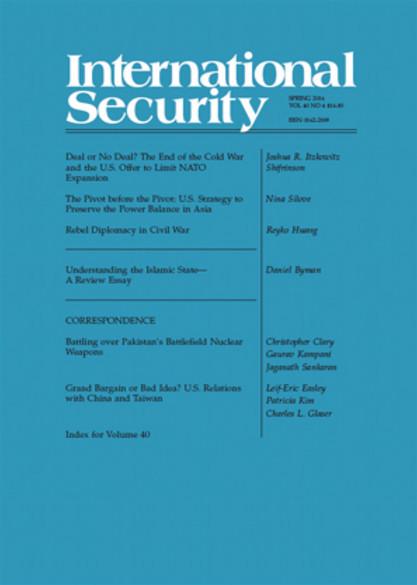作为楔子战略的军备控制:军备限制协议如何分裂联盟
IF 4.8
1区 社会学
Q1 INTERNATIONAL RELATIONS
引用次数: 0
摘要
战略军备控制面临危机。美国和俄罗斯退出了冷战后削减军备和战略稳定框架的协议,如《反弹道导弹条约》、《欧洲常规武装力量条约》和《中程核力量条约》。美俄之间唯一的战略武器控制协议(即《新削减战略武器条约》)将于2026年到期。主要的技术革命和中国的崛起改变了维持旧框架的政治力场。战略军备控制的动机通常被框定为通过限制某些武器、避免代价高昂的军备竞赛或保持军事优势来增强稳定的潜力。但国家也可以利用战略军备控制来分化对手。楔形战略理论解释了军备控制是如何通过影响对手的威胁感知、他们对正式承诺的成本和收益的看法以及他们对彼此的信任程度来实现这一目标的。三个具有里程碑意义的战略军备控制谈判(华盛顿海军会议上的《五国条约》和《四国条约》、《有限禁止核试验条约》和《限制战略武器谈判》)表明,楔子动机如何影响了这些谈判,并影响了大国关系。楔形逻辑在今天仍然适用。例如,美国可能会利用未来的军控协议来离间中国和俄罗斯,它必须谨慎对待与朝鲜的军控协议,这将对其与韩国的关系产生负面影响。本文章由计算机程序翻译,如有差异,请以英文原文为准。
Arms Control as Wedge Strategy: How Arms Limitation Deals Divide Alliances
Abstract Strategic arms control is in crisis. The United States and Russia have retreated from agreements that formed the framework for post–Cold War arms cuts and strategic stability, such as the Anti-Ballistic Missile Treaty, the Treaty on Conventional Armed Forces in Europe, and the Intermediate-Range Nuclear Forces Treaty. The only strategic arms control agreement between the United States and Russia (i.e., New START) expires in 2026. The political forcefield that sustained the old framework has been altered by major technological revolutions and China's rise. Motives for strategic arms control are conventionally framed in terms of their potential to enhance stability by limiting certain weapons, avoiding costly arms races, or preserving military advantage. But states can also use strategic arms control to divide adversaries. Wedge strategy theory explains how arms control can do so by affecting adversaries' threat perceptions, their beliefs about the costs and benefits of formal commitments, and their degree of trust in one another. Three landmark strategic arms control negotiations (the Five-Power Treaty and the Four-Power Treaty at the Washington Naval Conference, the Limited Nuclear Test Ban Treaty, and the Strategic Arms Limitation Talks) show how the wedge motive informed these negotiations and influenced great power relations. The wedge logic remains relevant today. For example, the United States may employ future arms control agreements to drive a wedge between China and Russia, and it must be cautious about arms control deals with North Korea that would negatively affect its relationship with South Korea.
求助全文
通过发布文献求助,成功后即可免费获取论文全文。
去求助
来源期刊

International Security
Social Sciences-Law
CiteScore
7.40
自引率
10.00%
发文量
13
期刊介绍:
International Security publishes lucid, well-documented essays on the full range of contemporary security issues. Its articles address traditional topics of war and peace, as well as more recent dimensions of security, including environmental, demographic, and humanitarian issues, transnational networks, and emerging technologies.
International Security has defined the debate on US national security policy and set the agenda for scholarship on international security affairs for more than forty years. The journal values scholarship that challenges the conventional wisdom, examines policy, engages theory, illuminates history, and discovers new trends.
Readers of IS discover new developments in:
The causes and prevention of war
U.S.-China relations
Great power politics
Ethnic conflict and intra-state war
Terrorism and insurgency
Regional security in Africa, Asia, Europe, and Latin America
U.S. foreign and defense policy
International relations theory
Diplomatic and military history
Cybersecurity and defense technology
Political economy, business, and security
Nuclear proliferation.
 求助内容:
求助内容: 应助结果提醒方式:
应助结果提醒方式:


